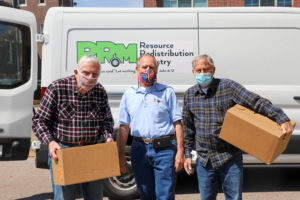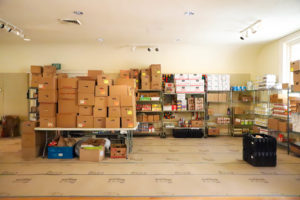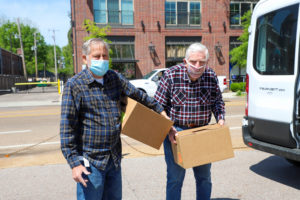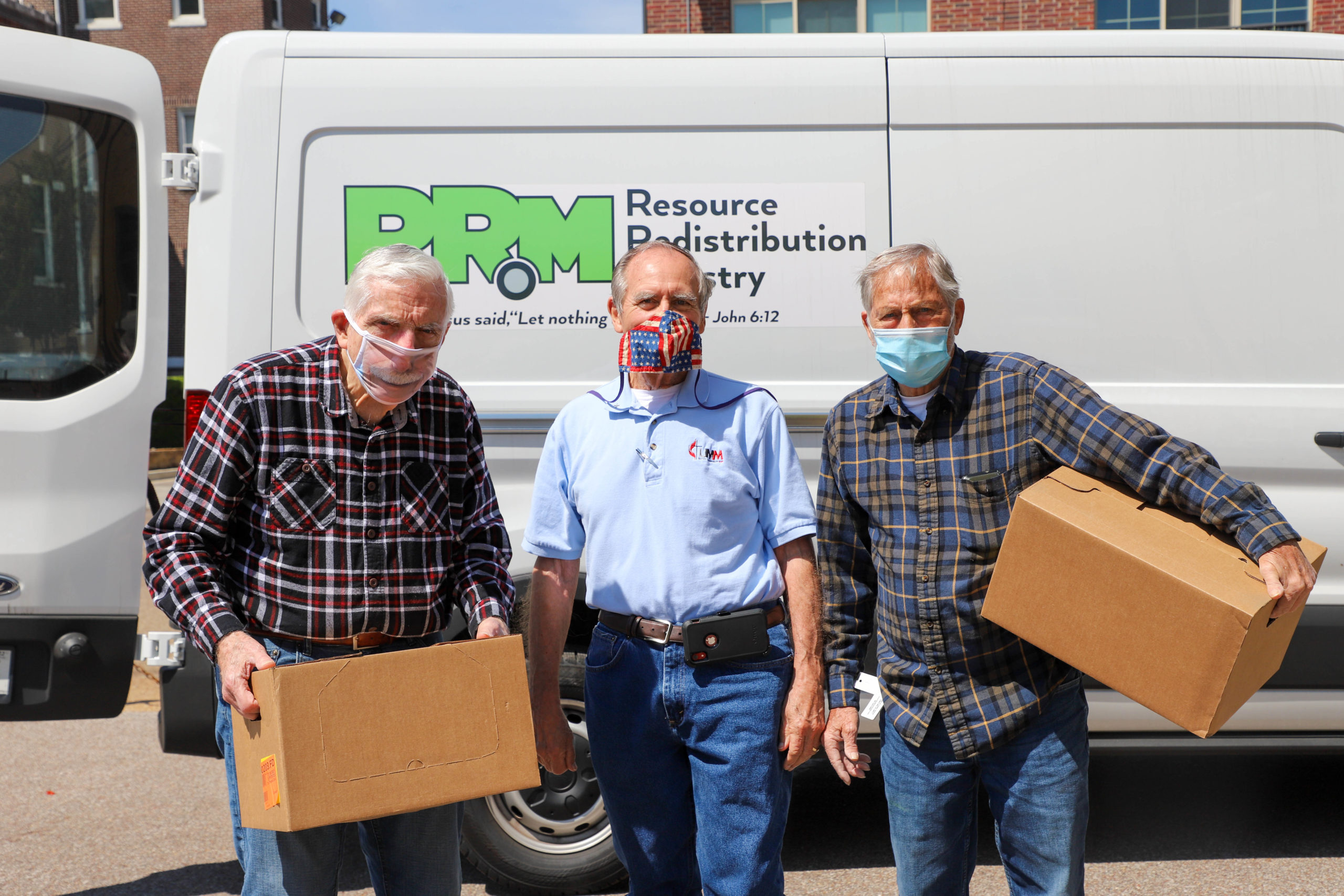Interview with Tommy Hart of Resource Redistribution Ministries
Words by Heidi Rupke

It all started when Tommy’s friend Bob was innocently shopping at Costco in March 2016. He saw employees emptying produce into bins that were then hauled out to the dumpster. Bob asked the employees what was going on. They were clearing the way for new inventory, they said. Bob asked if he could take the extra produce off their hands before it landed in the dumpster. A supervisor agreed but with one condition: Bob had to take the excess 365 days a year.
Tommy Hart remembers getting the call from Bob about an opportunity to rescue food from the landfill and share it with neighbors in need. Tommy drew on his years of connections from city government and church circles to find people who could volunteer to move the produce from Costco to nearby nonprofits. Once he had a core group of volunteers, he got organized.

While many people are upset about food waste in the face of widespread food insecurity, it’s harder to start to change a huge system. Tommy has found the keys to effective food rescue are good communication, regular volunteers, and careful record-keeping. In 2020, Tommy’s group—now a nonprofit called, appropriately enough, Resource Redistribution Ministries—rescued just shy of 500,000 pounds of food from Costco, Trader Joe’s, and a few other retailers. An estimated dollar value for that work is $714,000. This is all accomplished with volunteer drivers (who go out in teams of two, seven days a week), a few vans and a regularly updated Google calendar.
“One of my strengths is figuring out how to keep both sides of the coin happy,” says Tommy.
“Sides of the coin” refer to both the donating and receiving partners. Donation partners need to build relationships with drivers who must arrive on time every week. Receiving partners need adequate refrigeration and storage space for the food deliveries that come in. Before an organization signs on with Tommy, he asks them about their needs and their capacity. How many people do they serve? How often? What foods do they use the most of? Connecting the two sides are the volunteer drivers. Drivers need to know their routes and how to record what they’re transporting. This is where Tommy’s organizational skills come in handy.

Food rescue is a win-win for both sides of the coin. Retailers save on waste tipping fees. Nonprofits save on their food spending. One of the groups the Resource Redistribution Ministries delivers to is a senior living center. Residents receive produce and other items that can be prepared simply and healthfully in their living spaces. That’s a real financial and physical impact for people with limited resources.
“We had money left in our budget at the end of the year,” one representative of a nonprofit organization told Tommy.

Tommy suspects that food rescue is also a win for the drivers, some of whom have been with the organization from its beginning. Volunteers give their time, but also find creative ways to support the efforts: donating money to purchase a van, providing advertising services for wrapping the van with their logo and finding new sources of food and places to distribute it.
Resource Redistribution Ministries currently serves about 35 nonprofit agencies in the Memphis area, but they are open to more. They currently rescue food from grocery stores and a pizza place, but they’re interested in working with wholesalers, distributors, and farmers. Where some people see food waste as a tragedy, Tommy recognizes and seizes the opportunity. Tommy Hart and Resource Redistribution Ministries are one way that food systems in Memphis are being transformed.
(The most recent estimates show that almost one in four Tennesseeans is food insecure during the covid-19 pandemic. 2019 estimates were at 19% for Shelby county.)

